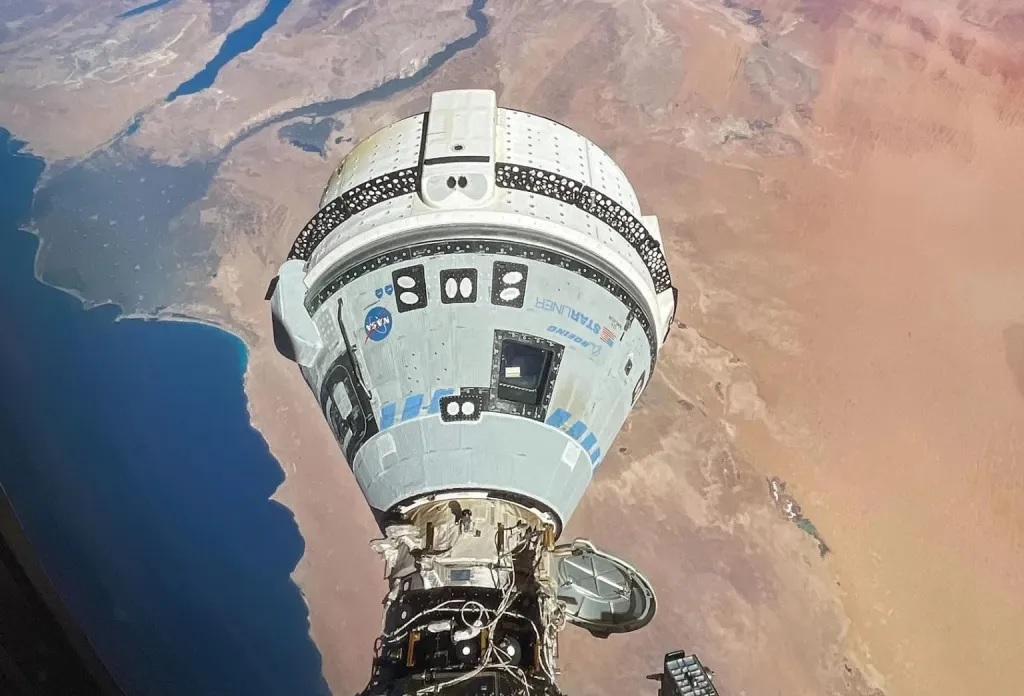- Web Desk
- Yesterday

How Boeing’s Starliner can bring its astronauts back to Earth
-
- Reuters
- Jun 25, 2024

WASHINGTON: Problems with Boeing’s Starliner capsule, still docked at the International Space Station (ISS), have upended the original plans for its return of its two astronauts to Earth, as last-minute fixes and tests draw out a mission crucial to the future of Boeing’s space division.
NASA has rescheduled the planned return three times, and now has no date set for it. Since its June 5 liftoff, the capsule has had five helium leaks, five maneuvering thrusters go dead and a propellant valve fail to close completely, prompting the crew in space and mission managers in Houston to spend more time than expected pursuing fixes mid-mission.
Read more: How Boeing’s Starliner can bring its astronauts back to Earth
Here is an explanation of potential paths forward for Starliner and its veteran NASA astronauts, Barry “Butch” Wilmore and Sunita “Suni” Williams.
Starliner can stay docked at the ISS for up to 45 days, according to comments by NASA’s commercial crew manager Steve Stich to reporters. But if absolutely necessary, such as if more problems arise that mission officials cannot fix in time, it could stay docked for up to 72 days, relying on various backup systems, according to a person familiar with flight planning.
Internally at NASA, Starliner’s latest targeted return date is July 6, according to this source, who spoke on condition of anonymity. Such a return date would mean that the mission, originally planned for eight days, instead would last a month.
Starliner’s expendable propulsion system is part of the craft’s “service module.” The current problems center on this system, which is needed to back the capsule away from the ISS and position it to dive through Earth’s atmosphere. Many of Starliner’s thrusters have overheated when fired, and the leaks of helium – used to pressurize the thrusters – appear to be connected to how frequently they are used, according to Stich.
Stich said recent test-firings of the thrusters while Starliner remains docked gave mission teams confidence in a safe return, though tests and reviews are ongoing. The mission management team, made up of NASA and Boeing personnel, is scrutinizing data on the propulsion issues, running simulations in Houston and considering how to fix them, such as by updating software or changing how the hardware is used.
Once NASA officials give the team a go-ahead for a return, Starliner’s thrusters would be used to undock the capsule from the ISS and begin a roughly six-hour journey home, gradually tightening its orbit before plunging into Earth’s atmosphere for a landing, assisted by parachutes and airbags, at one of several potential locations in the southwestern United States.
This is Starliner’s first mission to orbit carrying astronauts – the final test needed before NASA can certify it as the U.S. space agency’s second ride to the ISS. It would join SpaceX’s Crew Dragon, which has dominated the government and nascent private markets for human spaceflight amid Starliner’s years-long delays.
Even with the propulsion system issues, NASA has said Starliner still would be capable of returning the astronauts to Earth if absolutely necessary – that is, if the capsule must serve as an escape pod from the ISS in an emergency or if any of Starliner’s perishable items – such as its solar panels – show signs of expiring earlier than planned.
Unlike Starliner’s current mission, NASA did not set a scheduled return date for Crew Dragon’s first mission carrying astronauts in 2020. That mission ultimately lasted 62 days because the astronauts needed to help out on ISS maintenance because the space station was short-staffed at the time.
If Starliner is deemed incapable of safely returning Wilmore and Williams to Earth, one option would be sending them home aboard Crew Dragon, which ferried four astronauts to the station in March and is able to fit more people in an emergency.
That scenario, considered unlikely, would undoubtedly be embarrassing for Boeing. But NASA and Boeing officials, as well as engineers familiar with the program, told Reuters nothing about Starliner’s current problems indicates this would be needed.
In such a scenario, Starliner’s fate would depend on various factors including the extent of its technical issues.
The last time a NASA astronaut needed an alternative ride home came in 2022, when Russia’s Soyuz capsule sprang a coolant leak after delivering to the station two cosmonauts and American astronaut Frank Rubio.
Read more: Boeing Starliner return to Earth delayed again, no date set
NASA had considered Crew Dragon as an alternative ride home for Rubio but he eventually used an empty Soyuz capsule that Russia launched as a rescue craft. Rubio’s mission was extended from six months to a bit more than a year – 371 days – a record-breaking duration for an American in space.






